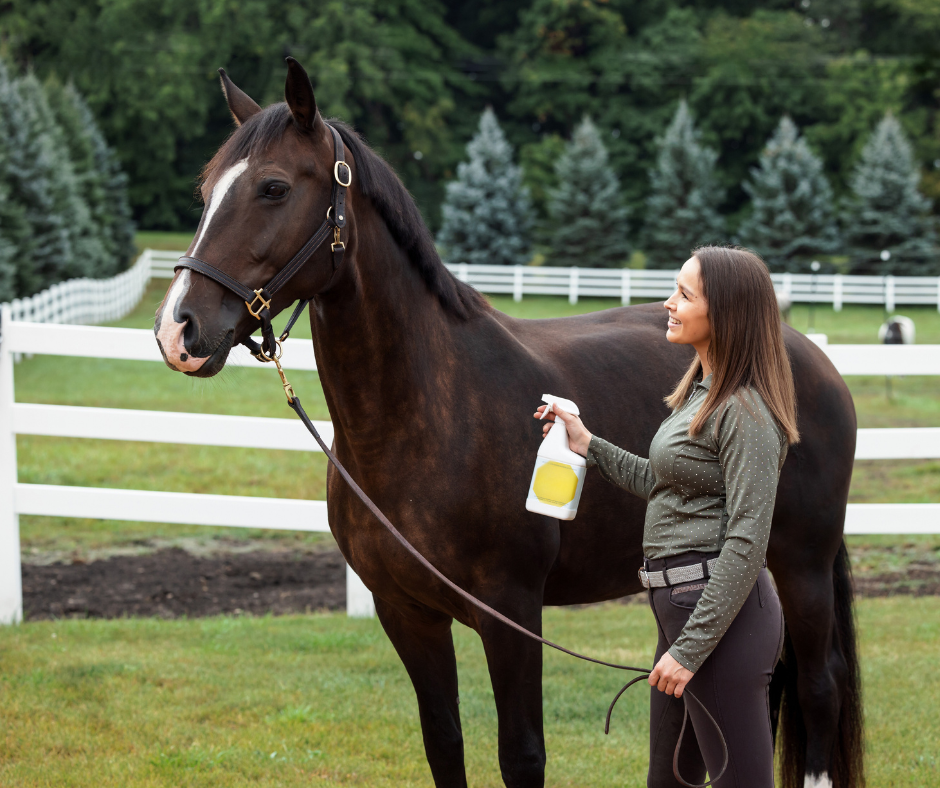Home > Fly Control > Going Green on Fly Control: How to Combat Flies Naturally
Going Green on Fly Control: How to Combat Flies Naturally
- April 2, 2024
- ⎯ Equus
Explore the Eco-Friendly Fly Control Guide: Natural Tactics for Dealing with Barn Flies!
Eco-consciousness doesn’t end when the barn doors close. For those who strive to manage their horses and stables with the environment in mind, turning to organic solutions is not only responsible, but also an investment in the well-being of your property. Here’s how to make a smooth transition from chemical-laden to natural fly control this fly season.
Understanding the Organic Approach
Deploying natural fly control methods requires a multi-pronged, preventative approach or Integrated Pest Management (IPM) program. A good IPM takes into account four factors:

- Biological control – This refers to the use of one organism to control a pest organism. Fly Predators®—the bugs that kill flies before they hatch—are an example of fly control.
- Cultural control – This refers to any measure that disrupts the ideal living conditions of the target pest. This includes manure management, controlling moisture and any other measure taken to control the areas flies reproduce.
- Mechanical control – This refers to the use of mechanical means to eliminate pests, such as non-chemical traps.
- Chemical control – This refers to the use of any pesticides, insecticides, repellents or other chemicals applied to kill of repel the pest. This would include eco-friendly repellent sprays and topicals.
Steps for Transition to Natural Fly Control
Whether you are looking for green options to add to your existing IPM program or building a new program from scratch, here are effective and eco-friendly management steps you may want to include.
1. Eliminate Potential Breeding Materials
Start by clearing out any materials that flies could use as breeding grounds. This includes removing rotting round bales, spoiled hay and other decaying organic matter that may attract flies to lay their eggs.
2. Dry Out Moist Areas
Flies love moist places. Make sure to spread out manure, keep grass short, and address any standing water concerns. Drying out these areas can significantly reduce the attractiveness to flies as breeding sites.
3. Sanitation is Key
Keep your barn and stable areas as clean as possible. Put lids on trash cans, remove manure promptly and maintain a tidy environment that’s less hospitable to flies and their offspring.
4. Reduce Inward Migration
Work with your neighbors to create a fly management plan that extends across properties. When everyone does their part, it’s less likely that flies will migrate from one area to another, creating a more isolated and manageable ecosystem.
To tackle existing adult flies, strategically place traps and use natural fly sprays to provide immediate relief. Products like Bye Bye Insects™ Fly Spray can be invaluable in managing the immediate fly situation while your natural control measures take effect.

6. Implement Biological Control
Biological control adds a potent layer to your Integrated Pest Management (IPM) strategy.
Flies are more than just a seasonal annoyance; they are integral parts of ecosystems, serving as primary decomposers. To keep our equine environments balanced, it’s crucial to understand the lifecycle of these insects. Flies have four distinct stages: egg, larva, pupa, and adult. By targeting larvae — the stage where flies are most vulnerable — you can create a significant impact on the population.
Fly Predators® intervene at the crucial pupal stage, breaking the fly lifecycle. By attacking the pupae before they hatch into the buzzing adults, Fly Predators® effectively reduce the future generations of flies, ensuring that the adult population remains in check.
Gear Up to Go Green
As you gear up for the fly season, remember that your choices don’t just affect your stable, but the entire local environment. Take the time to invest in natural fly control methods and enjoy the returns—a greener, more sustainable approach that ensures the well-being of your property and your horses.
Brought to you by:






